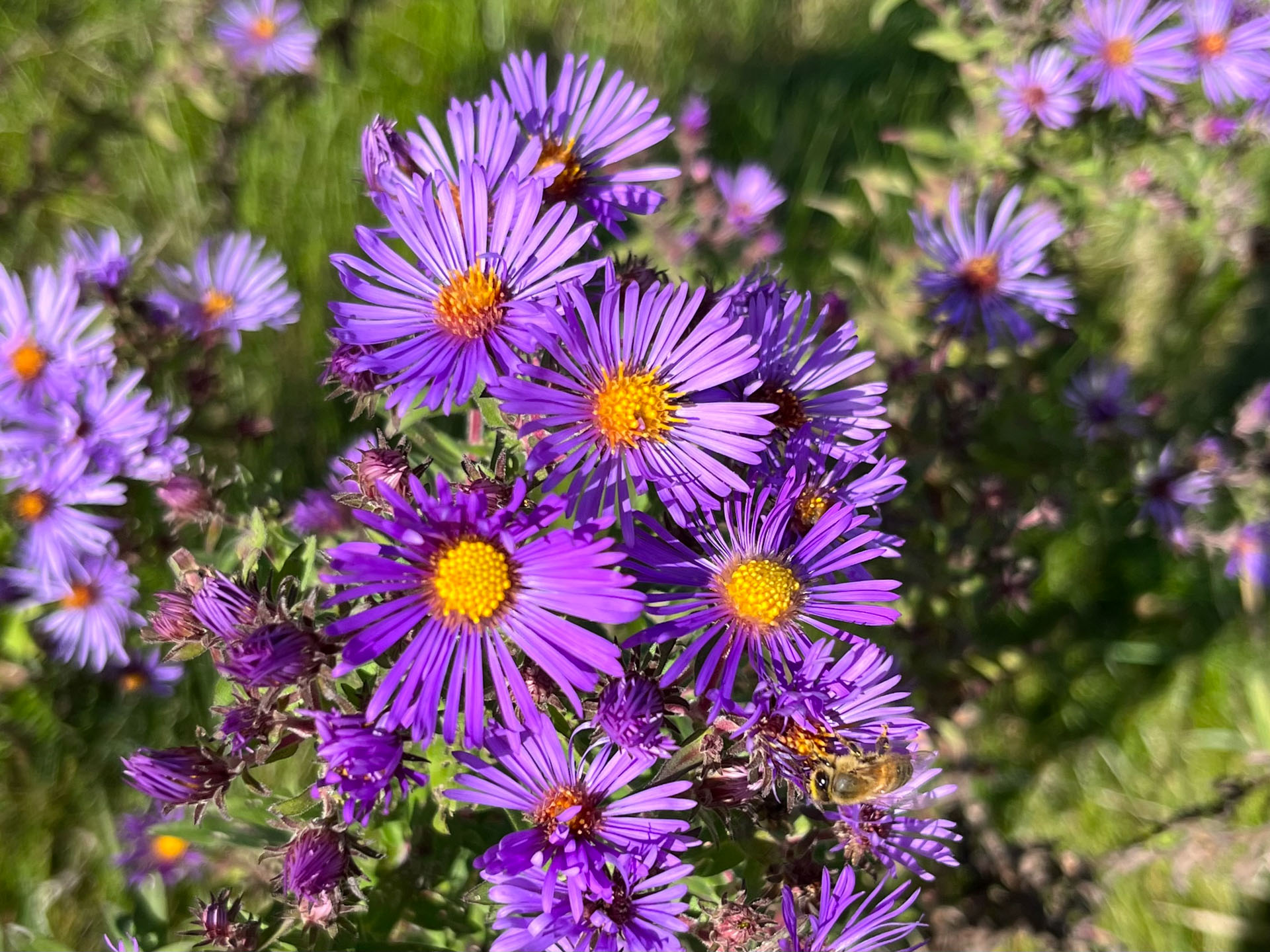By Nadie VanZandt
Editor’s note: Nadie VanZandt is a UVM Extension Master Gardener from Panton.
An excellent choice to consider for late-season interest in your garden is the New England aster, a North American native plant with many benefits. When other plants start to wither, New England asters bloom with brilliant shades of violet and purple daisy-like flowers prolonging the color in your garden from late summer through late fall.
The New England aster is a species of native plant belonging to the Asteraceae (daisy) family. The name “aster” comes from the Latin word astrum, which means “star.” In Greek mythology, the aster flower was created by the tears of the goddess Astraea.
The story goes that Astraea was troubled by the absence of stars in the sky and began to cry. While her tears fell to the ground, they turned into star-shaped aster flowers. The plant’s genus was designated as Aster until the 1990s when botanists reclassified it as Symphyotrichum to distinguish its genetic characteristics from the Eurasian aster. The current scientific name for the New England aster is Symphyotrichum novae-angliae where Symphyotrichum means “united hairs” and novae-angliae means “New England.”
New England asters are herbaceous perennials with an upright growth habit. They form clumps from stems that grow rough, velvety alternate leaves with smooth edges. From early to late fall, their upper stems produce an abundance of composite flower heads in vibrant shades of red violet and purple with rich yellow centers. Many of the lower leaves will turn brown and fall off as the season fades.
They can grow 3-5 feet in height, making them easily spotted in their natural habitat, which includes prairies, lakeshores and wet meadows as well as disturbed areas such as old fields, railways and roadside edges.
These attractive wildflowers are hardy. They grow in full sun to part shade in U.S. Dept. of Agriculture Plant Hardiness Zones 3 to 8 (planthardiness.ars.usda.gov) in soil high in organic matter although they tolerate a wide range of climates and soil types. In addition, they are resistant to many pests and diseases and effectively compete with weeds.
During the late growing season, a wide range of pollinators rely on New England asters as a vital source of pollen and nectar, especially the migrating monarch butterflies, but also flies, honeybees and native bees. In addition, other insects and caterpillars feast on the plant’s leaves.
New England asters are easily cultivated. Many nurseries offer cultivars of Symphyotrichum novae-angliae. They also can be propagated by seeds, bare roots or transplants.
Plant the seeds at the first signs of frost as they need the cold winter temperatures to germinate in the spring. Prepare an area with good air circulation that’s exposed to full sun and with moist well-drained soil. Loosen the soil and broadcast the seeds. Gently press the tiny seeds, just enough to make contact with the soil, to ensure proper germination. They should not be buried deeply.
If planting from bare roots or container plants, be sure to place them in moist, well-drained soil and follow with regular waterings until the roots are established. As another option, transplanting can be done in late fall after the plants go dormant. Once established, these natives are drought-tolerant and disease-resistant, thereby reducing the need for water and pesticides. New England asters fit perfectly in pollinator gardens, in borders or as accent plants in more formal landscapes. Plant them en masse alongside goldenrods or rudbeckia for a stunning display of contrasting colors. They are ideal for those looking to contribute to their local and natural ecosystem.




